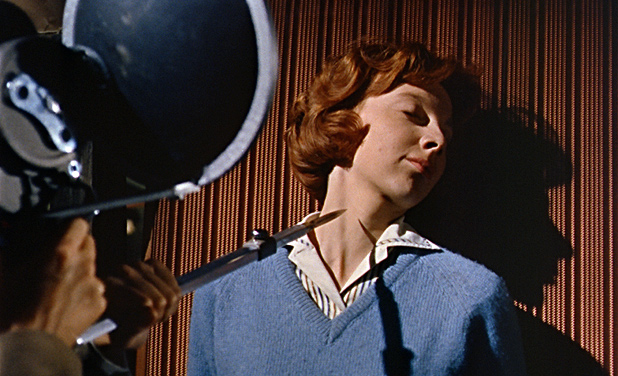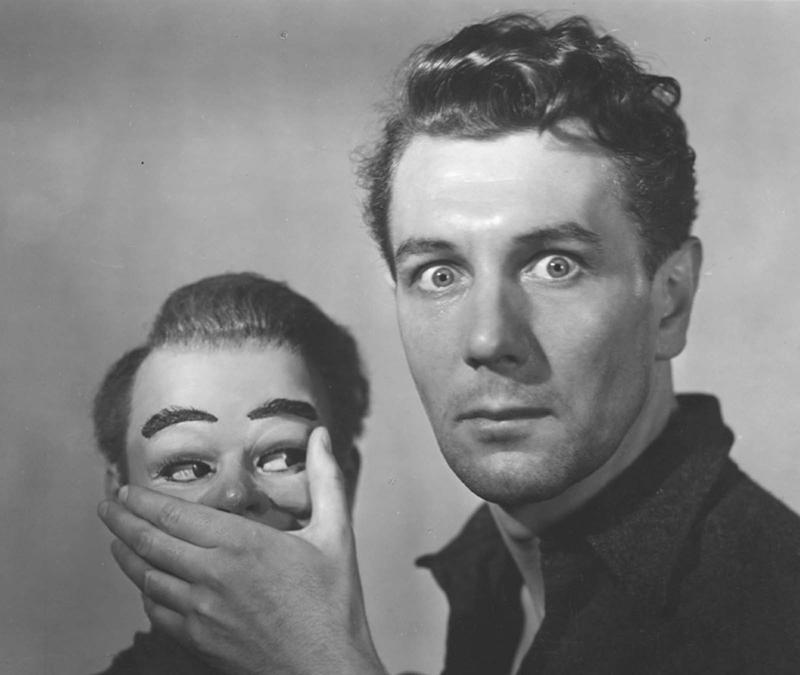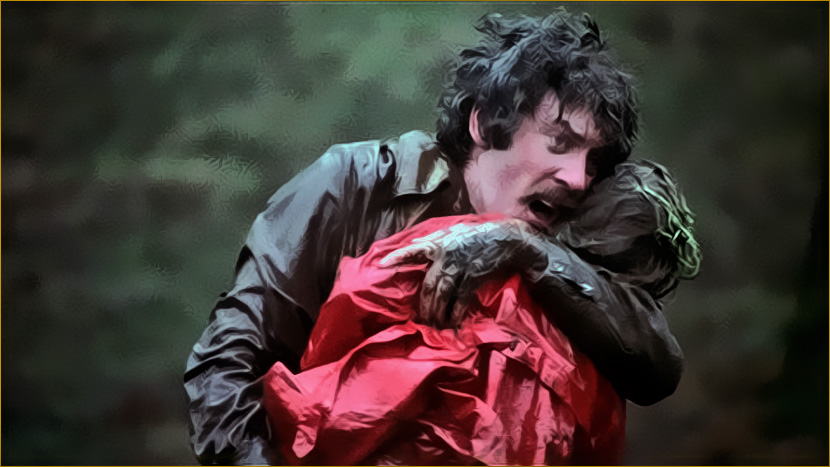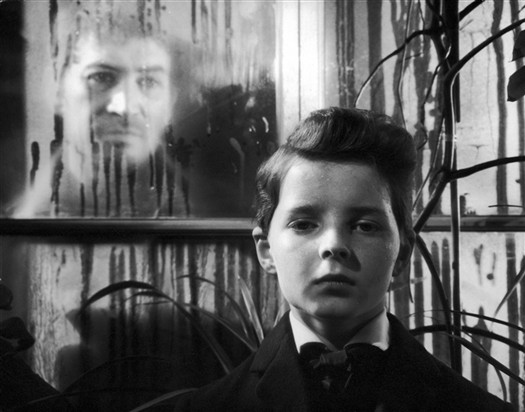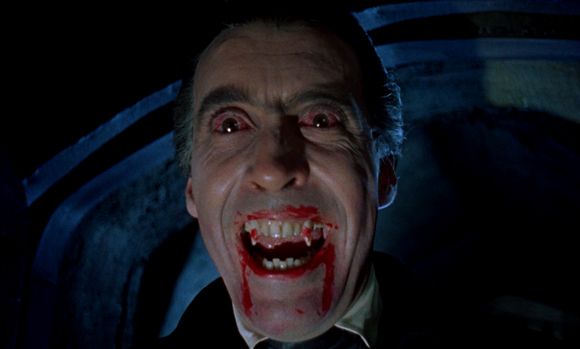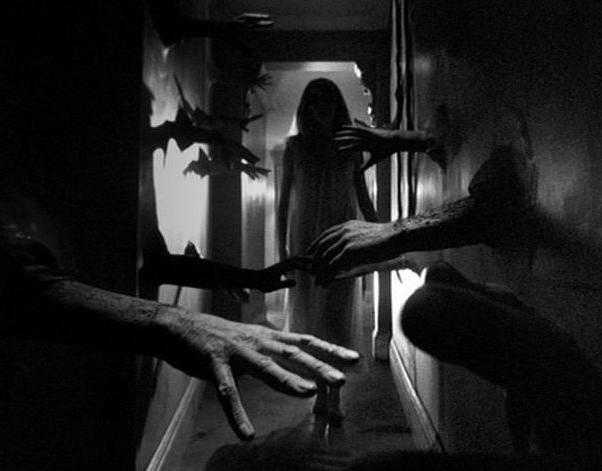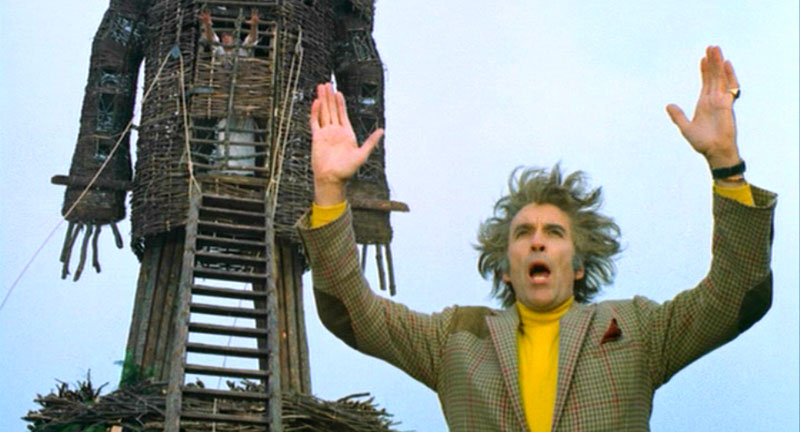7. Peeping Tom (1960)
Not all filmmakers believe cinema to be a pure, beautiful, innocent thing. In fact, some regard it with great suspicion. Peeping Tom demonstrates this as pertinently as ever.
Leo Marks’ & Michael Powell’s examination of Hitchcockian-like voyeurism spliced with pure horror depicts a serial killer who literally kills victims with his camera, catching everything on film and knocking it all together to reflect his life’s work.
As a cinematic viewer, you’re ordinarily left to watch other people’s lives in peace when you visit a theatre or pop on a DVD. Peeping Tom makes you acknowledge your actions, and forces you to consider why you don’t give the act of voyeurism more than a second thought when you dim the lights. Is it really OK that we thrive on looking at other people when they cannot see us?
A splendid, intelligent, audacious piece of meta-horror filmmaking, Peeping Tom is now rightly regarded as a British classic, and remains a constant source of inspiration for aspiring directors who attempt to subvert the rules of cinema and create material that asks questions both of itself and its audience.
6. Dead of Night (1945)
A film that Martin Scorsese has often cited as one of his favourites of all time, Dead of Night is one of the most notable portmanteau movies ever made, and has since acted as inspiration for anthology horrors such as V/H/S, Tales of the Crypt, and The Twilight Zone.
With Alberto Cavalcanti, Robert Hamer, Basil Dearden and Charles Chrichton all pulling the strings of separate segments, Dead of Night contains an overarching narrative that loosely links the rest of the stories together. Upon his arrival at a party, an architect declares that he has seen all of the fellow guests in a dream. The party go-ers then proceed to reiterate tales of supernaturalism and horror – all of which play a role in the film’s disturbing final sequences.
Although it may appear a little dated to some, there’s no denying the influence Dead of Night has had on horror cinema. Many of the stories remain cold and unsettling to this day. Just try watching that ventriloquist segment without getting creeped out.
5. Don’t Look Now (1973)
Don’t Look Now begins with a horrible tragedy, and only becomes more upsetting as it floats away from rural England and into the canals of Venice. A haunting tale where death continually lingers in the shadows, Nicolas Roeg’s movie is frequently cited as one of the most disturbing and powerful horror films ever made.
After their young daughter accidentally drowns whilst innocently playing outside her country home, parents John and Laura Baxter are stricken with grief. Sometime later, John accepts a contract to do some work on an ancient church in Venice, yet despite the change in scenery, John and Laura still find the memory of their little girl in her bright red anorak following them around.
Gut-wrenching, tear-jerking, and ultimately terrifying, Don’t Look Now is a deep study of the human psyche, how we deal with the horrific pain that grief causes, and the kind of mental barriers we put up to avoid experiencing negative emotions. Donald Sutherland and Julie Christie are phenomenal in the lead roles, offering two powerful performances in an extremely effective film.
4. The Innocents (1961)
Fantastically foreboding and captivatingly creepy, The Innocents is an exercise in atmospheric horror cinema that demonstrates how you don’t need to viciously hurl things at the screen in order to scare an audience out their wits.
Jack Clayton directs this enthralling ghost tale, with the magnetic Deborah Kerr serving up the kind of committed performance that safely anchors the movie whilst allowing the atmosphere of dread to loom large. Kerr stars as a governess who arrives at a mansion to care for two children, but as she gets to know them there is something about the kids that gives her chills.
In time it is revealed that there are malicious, evil spirits possessing the children, leading to some truly terrifying scenes where the innocence of the kids is manipulated by the ghosts in severely warped ways. The moment where the governess attempts to kiss one of the children goodnight is unsettling enough to stay with you forever.
3. Dracula (1958)
No British horror film list would be complete without some sort of Hammer Horror representative in place. And what better movie to represent this production company than the one starring the world’s most illustrious vampire?
Dracula 1958 (which paraded under the title of “Horror of Dracula” across the pond) raked in a pretty penny at the box office, and spawned eight additional Hammer spin-offs and sequels, as well as countless other films that turned to the Count for character inspiration.
Dracula was not the first British vampire film ever made, and by no means was it the last either. But it does arguably remain the most iconic. Aside from standing alone as a fine, affective piece of cinema, it also encapsulates everything worthy about the Hammer Horror productions – aptly reflecting the unique kind of rich atmosphere that these films generated.
Dracula and its ominous opulence ultimately gave the production company an emphatic nudge towards a period of unrivalled success, where Hammer Horror were the only horror films considered worthy of your time.
2. Repulsion (1965)
For all the mind-boggling special-effects that contemporary Hollywood can conjure up in modern cinema, no film has quite captured the essence of a woman’s slow descent into madness better than Repulsion.
Roman Polanski’s feature may have been released as far back as 1965, but the way in which it manages to convey a severely warped and disturbed human mind remains as impressive as ever.
The movie tells the tale of Carol – a young woman who is left alone in a London flat with nothing but her dark thoughts for company. Carol’s anxieties and sexual insecurities begin to eat away at her after time, and before long her concerns manifest themselves into horrific hallucinations, all shot with admiral aplomb by a man who spent much of his later career thriving on creating the same kind of terrific cinematic tension (see The Pianist and Rosemary’s Baby for proof).
Repulsion may be one of Polanski’s very first directorial efforts, but it also remains one of his very best. As far as British psychological horrors go, Repulsion set a bar that’s arguably yet to be surpassed. Or met, for that matter.
1. The Wicker Man (1973)
Neil LaBute’s 2006 remake of The Wicker Man can be considered a reprehensible re-tread in every sense of the phrase, not least because it managed to tarnish the reputation of the terrifying original that was shot some thirty years prior.
The comic value of Nicolas Cage in one of his most mad-eyed performances (even by his standards) ensured that clips from the remake were met with howls of incredulous laughter, and The Wicker Man was subsequently considered a gimmick among the younger generation of horror fans.
Anyone who saw Robin Hardy’s original first will be all too aware of the important place it has among British horror cinema. Utterly absorbing and strongly repellent all-at-once, the production is one of the most chilling movies to ever come out of the UK. The film’s final images containing the giant wicker man will stay with you forever – if you can bring yourself to put Cage’s flapping tongue out of your mind for just a few minutes.
Author Bio: Gareth Lloyd is a freelance writer with a Bachelor of Arts degree from the University of Manchester in English Language & Screen Studies, and a pending Master of Arts degree from Aberystwyth University in Film Studies. Along with postgraduate study, he writes articles on film, sport, music, social life and literature.
